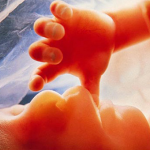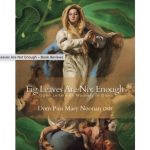“We publish here a further extract from historian Henry Sire’s Phoenix from the Ashes
(Kettering OH, Angelico Press, 2015, pp. 93-100).”
Published on Super Flumina
Urban VIII is chiefly remembered today as the pope who condemned Galileo. This error… is the basis for one of the great myths that have been deployed against the Church, and few incidents in history have been so misrepresented. The truth about the case is buried under a number of major fallacies, backed by a collection of established anti-Catholic legends.[1]
The first common fallacy is that in Galileo’s time heliocentricity was a proven scientific fact, the proof being variously attributed either to Copernicus or to Galileo himself. In either form the idea is mistaken. Helioicentricity was proved by neither of those two scientists; it was proved by Newton, in the sense that he presented an overwhelmingly convincing model for it. Until Newton’s time, heliocentricity was a theory that attracted some scientists by its mathematical simplicity, but which nobody—unless of Galileo’s opinionated temper—asserted as proved.
The theory, reviving the teaching of some Greek scientists such as Pythagoras, had been published with detailed calculations by Copernicus (Kopernik) in 1543. The author was a Polish priest, and his treatise, which was dedicated to the reigning pope, at first aroused no misgivings in the Catholic world. It was made a set book at the University of Salamanca, and the Spanish theologian Diego de Zứniga expressly argued against viewing it as incompatible with scripture. This approach contrasted with that of Luther and Melanchthon, whose commitment to the literal interpretation of scripture led them to attack the Copernican theory as soon as it was published.
As to scientific acceptance, there was no general movement away from the Ptolemaic view until it began to be undermined by astronomical observations. Tycho Brahe, from his study of comets in 1577 and 1585, concluded that the ‘crystal spheres’ which held the planets in place in the Ptolemaic scheme did not exist, since the trajectories of the comets crossed them. In the seventeenth century, Galileo himself took the case further. By means of the telescope (a new Dutch invention which he was the first to use for astronomical study), he discovered the phases of Mercury and Venus and thus showed that those planets revolved round the sun, not the Earth. This, however, was not a proof of the Copernican model. There remained a great objection to Copernicanism, that there was no observational evidence for the movement of the Earth itself, and one significant argument against it: in the vast journey through space which the heliocentric model ascribed to the Earth, the stars ought to appear to change their positions from season to season. Galileo searched for stellar parallax with his new telescope but admitted that he could not find it—a pardonable failure, since it was not detected until 1837. But the fact remained that the use of a tool of unprecedented accuracy for scanning the heavens was unable to dispose of the main practical argument against the heliocentric theory.
If the Ptolemaic model was failing, and the Copernican not yet proved, what solution was left? Here we come to the second of the major fallacies in Galileo’s case, the one propagated by Galileo himself when he titled his exposition Dialogue Concerning the Two Great Systems of the World. The point thus ignored is that the dispute in his time was not between two astronomical theories. A third had been propounded by Tycho Brahe in the previous generation. According to this (as modified by his seventeenth-century followers), the Earth was at the centre of the universe, fixed in position but rotating on its axis; the sun revolved round the Earth in a yearly, not a daily, trajectory; and the five known planets revolved round the sun. Galileo’s own discovery of the moons of Jupiter, while it helped to shake the Ptolemaic theory, pointed at least as much to the Tychonic as to the Copernican, since it showed the possibility of one system revolving around another.
Nowadays we treat the heliocentric model as obvious, because we understand it in the light of Newton’s explanation of gravitational forces; but we need to bear in mind that in Galileo’s time that case had not been made. Copernicus himself had so little inkling of it that he placed the centre of his system not in the sun itself but near it; his theory was purely mathematical one. Without the explanation of gravity that gave Newton’s model its cogency, there was no more reason to adopt the Copernican than the Tychonic system. Galileo himself made no advance towards explaining the physics of heliocentricity, even though it was his own experiments in gravity that gave the key to it. He ignored the findings of Kepler, which traced the planetary orbits, and it was left to Newton a lifetime later to put the two together and present the cosmic model that so delighted his contemporaries.
The objection to the Copernican theory was not merely that it failed to explain the forces involved; it overturned the theory of physical laws underlying the world view. According to this, the universe was seen as consisting of four elements, earth, water, air and fire—in modern terms, solids, liquids, gases, and phenomena such as fire and lightning. These elements naturally occupied concentric spheres: that of earth was the Earth itself, with a discontinuous sphere of water around it forming the seas and lakes; surrounding these was the sphere of air, and the sphere of fire was the outermost. The four elements tended to move to their proper spheres. Thus solids fell to return to Earth; trapped air would rise as exhalations from the earth or as bubbles from water; fire leapt upward to reach the upper sphere. Today we regard such explanations as mythological, but they were the best sense that scientists could make of the universe for some two thousand years. Given this system of physics, how could one understand a model in which the sun, a fiery body, was at the centre of the universe, and the Earth an aerial satellite of it? It should thus be realised that heliocentricity was widely opposed not from religious dogmatism but because it did not seem rational in terms of understood scientific laws, whereas geocentricity did. That is why Galileo’s condemnation in 1633 described the Copernican theory as “philosophically (i.e., scientifically) absurd”.
This brings us to the third great fallacy about Galileo’s case, that the Church’s opposition was based on biblical literalism. In fact it rested on nothing so simplistic. It sprang from a context of wide concern provoked by the scientific movement of the time, an iconoclastic tendency which was mounting a general attack on traditional Aristotelianism. The champions of that attack were undeterred by the fact that they failed to provide an intelligible model in place of what they challenged; yet, to those who valued the coherence of the old science, the deficiency could not be ignored. For Catholics particularly, there was the fear that if the rejection of Aristotelianism prevailed in physics, it would bring down the whole system of the Church’s philosophy. Hence we should realise that the opposition to Galileo, far from being obscurantist, was fundamentally an expression of the rationality of Counter-Reformation culture. It reflected a demand not merely for the coherence of science with religion, but for the coherence of science within itself. Its implication was that, in the broadest sense, it was not scientific to propose the heliocentric theory unless one could place it within a complete description of the forces of the universe.
A further point to be made is that astronomy at this time was not the strictly factual pursuit that it is assumed to be today. It was a study still half-immersed in its astrological origins, and a hunting ground for some highly eccentric thinkers. An example of these was the Dominican Giordano Bruno, whose condemnation is often classed with that of Galileo as displaying the Church’s persecution of science. The first thing to be said is that Bruno was not a scientist; he was a mystical thinker whose animistic view of nature was antithetical to any workable scientific method. He espoused heliocentrism not from any scientific proof but because of its abstract perfection. His radical teachings on a range of topics caused him to be condemned as a heretic, and he was burnt at the stake in 1600. What he shared with many contemporaries who favoured the heliocentric model was the idealistic rather than experimental basis for believing in it. A by-effect of his case, however, was that of alerting opinion in the Catholic Church to the heretical connotations of the Copernican view.
The result was that, when Galileo began boldly to preach the heliocentric theory, he met with a suspicion that might have been absent a generation before. In 1616 he underwent his first trial before the Inquisition, and the judgement pronounced was that, while Copernicanism might be taken as a theory, it should not be propounded as a fact. As a matter of science, this advice is sound. A scientific approach dictates in principle the keeping of a neutral attitude to what has not been strictly proved. It is true that throughout history progress has been led by assertive thinkers who pushed their convictions ahead of real proof, and their dogmatism may be excused for its advantage to science. Nevertheless, where a subject bears on religious truth a special case arises. A Catholic scientist who is serious about his belief will not assert an unproved theory that seems to conflict with religious teaching, though that need not prevent him from working to find genuine proof. A particular foible relevant here, in view of Galileo’s anti-clerical animus, is that of battlers who think that they show their intellectual integrity by flouting religious teaching. If they are proved right they appear vindicated; but if their theory turns out to be wrong they stand convicted of false confidence. An example from recent times is the theory of the multiple evolution of the human race, which used to be widely asserted twenty or thirty years ago until it was disproved by modern genetics.
The Church authorities in 1616 thus proscribed the Copernican theory technically on the grounds that it conflicted with certain passages in scripture; but they did not regard the literal sense of these as de fide. Cardinal Bellarmine, who was in charge of Galileo’s condemnation, put the orthodox case as follows:
“I say that if a real proof be found that the sun is fixed and does not revolve round the Earth, but the Earth round the sun, then it will be necessary to proceed very carefully to the explanation of the passages of scripture which appear to be contrary, and we should rather say that we have misunderstood these then pronounce that to be false which is proved.”
This judgement provides a good example of the integration of religious and secular thinking in the Tridentine culture of the time. Cardinal Bellarmine, besides being a theologian, was a man with a keen interest in physical science. He rebuked a premature, provocative assertion of an unproved theory, but did not invoke scripture dogmatically against it. Galileo suffered no penalties as a result of the condemnation, being obliged merely to desist from teaching the Copernican theory.
Seven years later, the election of Maffeo Barberini to the papacy seemed to offer fresh prospects. The pope was a fellow Florentine, a contemporary and friend of Galileo’s, and had shown his enlightened sympathy for the new studies. He had interested himself in the trial of 1616, and had personally intervened to keep the word ‘heresy’ out of the condemnation. They new pontificate was favourable to intellectual enquiry, and the cardinal nephew Francesco Barberini was elected to the scientific club in Rome, the Accademia dei Lincei, of which Galileo was a member. Galileo spoke to the pope and obtained his permission to publish a defence of the Copernican view.[2] He was instructed, however, to include in it an argument outlined by the pope in favour of the opposing case.
Galileo thus proceeded to write his Dialogue Concerning the Two Chief Systems of the World. This took the form of a discussion between two scientists and a benighted conservative who was given the name Simplicio. The work can hardly have been received by astronomers as a serous contribution to science. As its title implied, the Dialogue ignored the Tychonic model of the universe, which was widely accepted in scientific circles, and treated the only alternative to Copernicanism as being the Ptolemaic model, which up-to-date astronomers regarded as a straw man. Such an approach partly explains the attack on the Dialogue. There was no doubt that Galileo was an eminent scientist, but he was also a highly contentious one, as was seen in the methods he used to promote the Copernican theory. When he failed to find evidence for the Earth’s movement in stellar parallax, Galileo had sought it in the tides of the sea, and attacked Kepler for attributing them to the moon.[3] Another victim of his pugnacity was the Jesuit astronomer Fr Grassi, when he published his observations of a comet in 1619. Galileo resisted the conclusions about the comet’s orbit because they conflicted with the Copernican principle of universal circular motion round the sun. Unhampered by having observed the movement himself, Galileo sought to explain its phenomena in terms of optical illusion, and, with the intellectual balance that distinguished him, he reviled Fr Grassi as a scorpion and a snake. Anyone familiar with the subject knew that Galileo had made a fool of himself then, and it was easy to believe that he had made a fool of himself again. Thus, there were some in the Church who thought that they could treat Galileo as a charlatan, because he behaved like a charlatan. Unfortunately, in the case of heliocentricity Galileo happened to be right.
That was not, however, the essential cause of Galileo’s downfall. Being the jackanapes that he was, he had carried out the pope’s instruction to him by putting the suggested argument for geocentricity in the mouth of the foolish Simplicio. Urban naturally concluded that a deliberate insult was intended. “He does not fear to make sport of me,” he expostulated in defence of his reprisal. Yet that was still not the worst of the case. Galileo’s Dialogue was published in the spring of 1632, just as Urban was coming under the heaviest attack for his desertion of the Catholic cause in the Thirty Years War. In May of that year Gustavus Adolphus swept through southern Germany and seemed poised to enter Italy. Galileo’s squib could not have appeared at a more sensitive time. Faced with the anger of his cardinals, Pope Urban could hope to appease them (or at least the more gullible) by chasing heresy within the walls of Rome instead of taking arms against the true menace to the Church.
In condemning Galileo for heresy, the pope was resolved to keep the affair strictly within his control. What he ordered was not a regular trial before the Inquisition: he appointed a special tribunal, consisting of his own nephew as president and three members picked to produce the desired result. One of them was a Jesuit who was himself under investigation for heresy, and thus had the keenest motive to ingratiate himself with authority. None of them had any discernible qualification to study the astronomical question, except that the Jesuit, for good measure, was a committed anti-Copernican. To make the outcome even simpler, the charge was limited to that of having violated the prohibition of 1616 against teaching the Copernican doctrine. Galileo at first attempted to deny it, alleging that the Dialogue actually showed the weakness of the Copernican arguments. On this the comment of his Jesuit examiner is valid: “As he declares war on everybody and regards as mental dwarfs all who are not Pythagorean or Copernican, it is clear enough what he has in mind”. Galileo then admitted that the Dialogue taught the Copernican theory, but pleaded that it did so inadvertently. This seemed to offer the way to condemnation for a merely technical offence; but the pope would not have it. He was determined to frighten and humiliate Galileo, as only a sentence for heresy would do. Under threat of torture, Galileo—very different from the defiant hero of anti-Catholic myth—made a groveling confession, admitting that he had intended to teach Copernicanism, and he was condemned on that admission.
With this disgrace the pope was content. Touchy autocrat though he may have been, Urban remained a civilised man. Galileo’s nominal sentence of imprisonment amounted to his being lodged in the luxurious apartments of the archbishop of Siena, an old friend of his who treated him as an honoured celebrity. He was even allowed to send the Dialogue to be translated in Paris. After a few months Galileo was ‘released’, spending the remaining eight years of his life under house arrest in Tuscany. This exile should be seen in the context of Urban VIII’s general treatment of those connected with the case, which showed the tyrant’s impulse to drive from his sight anyone who reminded him of his displeasure. Fr Grassi, Galileo’s great opponent in astronomy, and a priest of unimpeachable orthodoxy, was also banished from Rome at the pope’s arbitrary wish, and was never allowed to hold a teaching post while Urban lived; and an ecclesiastical member of the Accademia dei Lincei suffered similar banishment.
One line of defence that used to be adopted by Catholic apologists, which attempted to exonerate the pope personally in Galileo’s condemnation, should thus be rejected. The process was a personal act of revenge for the insult the pope thought he had received from his protégé. One need hardly point out, too, the want of integrity on Urban’s part in condemning Galileo for teaching what he himself, sixteen years before, had insisted should not be called heretical. The trial of Galileo was not a proper examination of the Inquisition; indeed, when it came to giving the condemnation official form the Cardinal Inquisitor refused to sign it. Galileo’s blunder in apparently guying the pope was the decisive cause of his misfortune. If he had observed prudent respect the Dialogue would probably have escaped challenge. A clash between impudent folly and pompous autocracy has thus been misrepresented as a conflict between science and religion.
Some further remarks are appropriate on Galileo’s case. The use made of it to allege an opposition between the Church and science is significant in itself, because it is the only incident in the Church’s history capable of being so presented. The attempts made to enlist Giordano Bruno in the same cause require an even greater distortion of facts. But those who study Galileo’s time as it was will see in it the reverse of an opposition to scientific enquiry. The early seventeenth century was the time when science was emerging from its alchemistic and astrological origins, and the Catholic Church, far from opposing the movement, was in the forefront of it. The Society of Jesus alone included some of the leading scientists in Europe: Scheiner in optics, Cabeo in magnetism, Grassi in astronomy and Arriaga in physics. These figures exemplify especially the harmony of religious and secular culture, because they belonged to an order noted for its coherence of policy and teaching. At the same time, France produced two scientist-priests whose names remain known today: the cathedral provost Pierre Gassendi, who introduced the term ‘atom’ into scientific terminology, and the friar Marin Mersenne, a mathematician and coordinator of the scientific work of his day. Descartes was initiated into his scientific studies by the Jesuits of La Flèche, who showed their up-to-date zeal for the astronomical research of the time.
If we judge as a whole the question of the Church’s response to the discovery of heliocentricity, it will be seen to show not obscurantism but an essential openness to scientific knowledge. The initial acceptance of Copernicus has already been mentioned. Later, when Newton’s system was published, there was no rear-guard action in the Catholic world in defence of geocentricity; the condemnation of Galileo was soon regarded as a dead letter; the best edition of Newton’s Principia was one brought out in 1739-42 with a commentary by two French priests, Le Sueur and Jacquier. The acceptance in practice of the new science (although there was a slowness in officially revoking Urban VIII’s condemnation) displays the fundamental rationality of opinion in the Catholic culture: it conceded to the proof of Newton what it had refused to the base assertion of Galileo. More, it conceded to the coherence and harmony of Newton’s system what it had refused to the incompleteness of Galileo’s.
Against this, there is a more general point to be made about the place of Galileo’s case in Catholic intellectual history. The case may be identified as the point of rupture in the harmony that had previously existed between religious and secular knowledge; for it was not only Galileo and the heliocentric theory that fell under Urban VIII’s condemnation. The banishment of the astronomer Fr Grassi from Rome has already been mentioned. In the same year, 1633, the Jesuit physicist Fr Arriaga was removed from his teaching post at Prague University, an institution of which he was the most celebrated figure; his espousal of atomism, a theory which Galileo had also suggested in an earlier work, was the reason for the over-cautious response on the part of his order. This year, therefore, saw a triple blow to the acceptance of science by the Catholic Church. A fourth case is even further-reaching, for it extends the break to the philosophical field. Descartes was deterred by Galileo’s condemnation from proceeding with a treatise On the World which he was contemplating, and instead he wrote the Discours de la Méthode, published in 1637. Urban VIII’s reprisal thus had the effect of suppressing what doubtless would have been a valuable contribution to science, and substituting a work that began the dethronement of Aristotelianism in European philosophy. Without exaggeration, therefore, we can identify the 1630s as the decade, and can almost point to 1633 as the year, when the integrity of Counter-Reformation culture was broken.
It is a high irony that the condemnation of Galileo, which has so harmed the Church’s reputation, was the work of a pope who was the scientist’s patron, and who had explicitly shown his belief that Copernicanism was not an heretical doctrine. If Urban had been pope in 1616, he would probably have prevented even Galileo’s first, mild condemnation. Indeed, we may speculate that, if his pontificate had fallen twenty years earlier, he might now be regarded as the greatest pope of the seventeenth century, his talents remembered and his faults unexposed. As it is, he has left a wretched reputation, but one that falls short of his deserts. His action against Galileo diverts attention from his vaster offence of allowing, even to an extent abetting, one of the greatest historical calamities the Catholic Church has ever suffered. For those legacies, Urban VIII must be placed among the most disastrous popes in the Church’s history.










